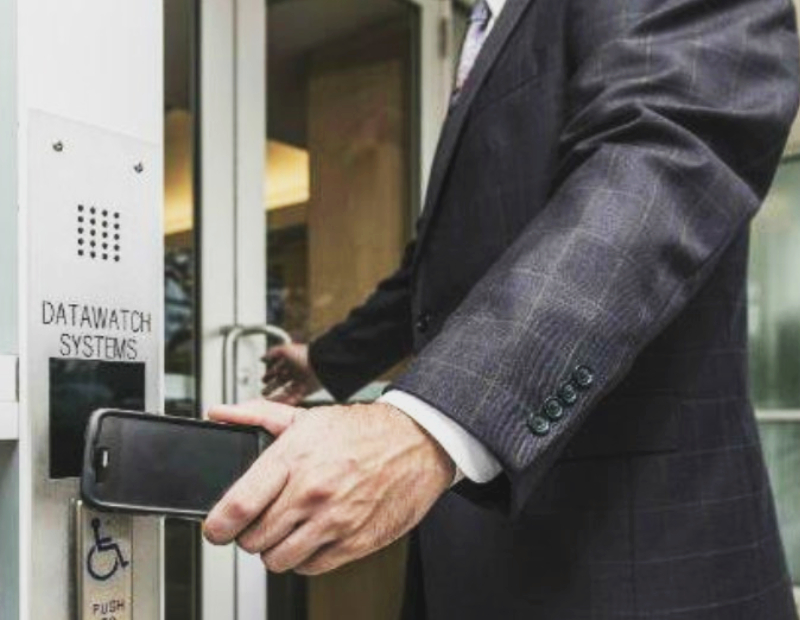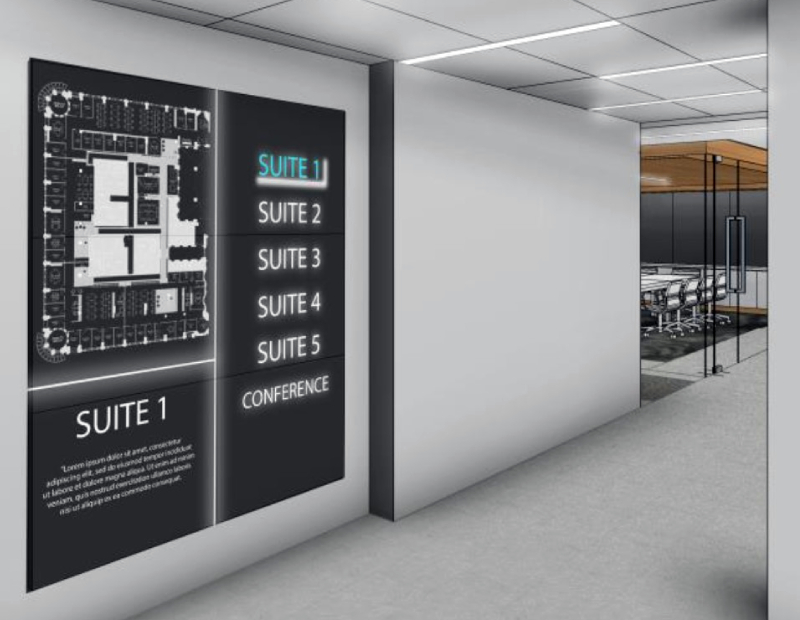Smart Upgrade Powers Capital Savings
At MetLife's District Center in Washington, D.C., a multi-pronged approach has cut operating costs and transformed the 22-year-old office property into a strategic asset.

Mobile credentials at District Center. Image courtesy of JLL
At District Center, a 1.2 million-square-foot office property in Washington, D.C., mobile credentials have replaced access cards at building and suites entrances. Room temperatures can be set, blinds lowered or meeting rooms booked from apps. Digital displays connected to smart systems let occupants find available conference rooms or learn about building events. Office managers use smart lighting sensors to gain colorful visual insights into occupancy patterns. And future tenants will be able to remotely prepare rooms for presentations.
READ ALSO: Smart Tech Steps Up for the Post-COVID-19 Office
It’s all the result of an ambitious update undertaken in 2017 and 2018 by JLL on behalf of MetLife Investment Management. Completed in 1998, the property is located at 555 12th St. NW in downtown Washington. The project’s goal: To use connected lighting solutions and smart building systems to gain not just energy efficiency, but to transform the office building into a strategic asset. The upgrades that made District Center a more connected building focus not just on today’s needs, but tomorrow’s as well.
Complete conversion
The project involved installing a fiber optic backbone (FACLAN), enabling communications between all Internet of Things (IoT)-related devices in the building, said Jim Landau, vice president, real estate, at MetLife Investment Management. The IoT upgrades included smart lighting fixtures, new building automation, variable frequency drives on all applicable motors, the latest building automation system and a complete conversion to direct digital controls from a pneumatically controlled system, Landau added.
“The purpose was to achieve a smart building end-user experience where all systems connected to the backbone are capable of talking to and reacting to each other, in order to achieve a more energy-efficient building,” Landau noted. “We also wanted to be able to provide the smart building infrastructure that new and existing tenants can take advantage of for their premises.” The base building work helps tenants cost-effectively install apps that control HVAC, lighting access control and other systems, he added.

Media wall concept at District Center. Image courtesy of JLL
Smartphone-enabled access control allowing perimeter access, tenant premises access and amenities access is a key improvement at District Center. Smart lighting incorporates beacon tracking occupancy sensors that enable tenants to better understand how space is used and better control utility costs. Conference center scheduling software lets occupants use an app to book conference rooms via their phones, computers or by means of an iPad display outside the conference rooms. “HVAC controls are also controlled by apps and can essentially control every (variable air volume) box,” Landau added.
Work started in the third quarter of 2017 and ended in the fourth quarter of 2018. Prior to the smart building retrofit, the average utility cost for the 22-year-old District Center was $2 million per year, Landau said. The upgrade has trimmed that expense by about 40 percent, to $1.2 million.
The upgrade is expected to pay for itself by 2023, six years after work began.
Fine-Tuning Efficiency
The formidable project to make District Center a connected building required surmounting a number of challenges, Landau said. Not least of those challenges was further improving operations at a building that was already a model of efficiency. District Center was LEED Gold Certified and at its previous measurement had earned an Energy Star score of 94.
READ ALSO: How Proptech Is Changing Energy Operations and Green Buildings
The project called for coordination of multiple contractors and technologies, each using different communication protocols, into a single managed IP network. Another headwind was providing base building infrastructure with open protocols that permit tenants to tie in their lighting, access control and other modern workplace systems to take advantage of the new smart building platform. Maintaining the system and keeping all of its integrated software up-to-date is another challenge. “There were very few reference projects for how to complete a systems integration project of this magnitude in a multi-tenant building,“ Landau noted.
Systems integrator SmartBT used Acuity Brands’ connected building solutions, Distech Controls’ building management solutions, Lithonia Lighting’s smart lighting solutions and nLight platform’s digital networked lighting controls.
In a statement, Yann Palmore, vice president of JLL’s Smart Building Program, remarked that MetLife Investment Management sought to distinguish District Center by giving tenants a new suite of digital amenities. “We developed a platform that achieves these human experience goals, while simultaneously driving more efficient and sustainable operations,” he said.







You must be logged in to post a comment.